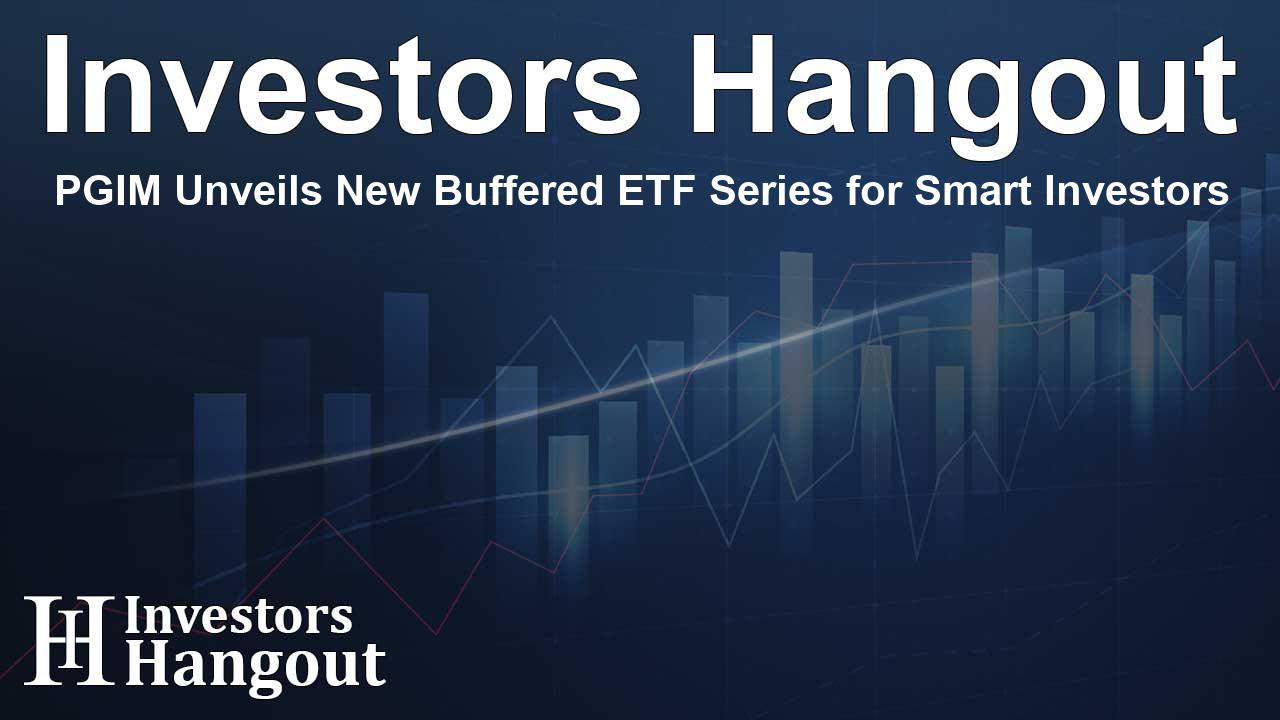PGIM Unveils New Buffered ETF Series for Smart Investors

PGIM Launches Innovative Buffered ETF Series
In an exciting development for the investment community, PGIM, a significant player in the global investment management space, has introduced a series of new ETFs designed to offer both upside potential and downside protection. These new products, including the PGIM S&P 500 Max Buffer ETF series and the PGIM Nasdaq-100 Buffer 12 ETF series, aim to provide investors with strategic options that align with their financial goals.
Overview of the New ETFs
The newly unveiled ETFs come with a competitive net expense ratio of 0.50%, making them among the most cost-effective options available in the buffer ETF market. This strategic launch underscores PGIM’s commitment to enhancing its product offerings to meet diverse investor needs.
PGIM S&P 500 Max Buffer ETF Series
The PGIM S&P 500 Max Buffer ETF series aims to generate returns that closely mirror those of the widely recognized SPDR S&P 500 ETF Trust (SPY). It offers investors a predetermined upside cap starting at 3%, while providing robust downside protection against potential losses associated with SPY. This ETF series is designed to deliver complete downside protection over a designated one-year target outcome period and will include twelve individual ETFs listed monthly on the Cboe BZX.
PGIM Nasdaq-100 Buffer 12 ETF Series
Similarly, the PGIM Nasdaq-100 Buffer 12 ETF series is structured to match the price return of the Invesco QQQ Trust. With a downside buffer that shields investors from the first 12% of losses, this series consists of four ETFs exclusively listed on the Nasdaq. This innovative approach allows investors to engage with technology-focused investments while guarding against significant market downturns.
PGIM Laddered Nasdaq-100 Buffer 12 ETF
Another noteworthy addition is the PGIM Laddered Nasdaq-100 Buffer 12 ETF, identified as PBQQ. This fund provides capital appreciation while diversifying investments across the quarterly PGIM Nasdaq-100 Buffer ETFs. By taking a laddered approach, investors can benefit from a broader range of outcomes while spreading their risk across time.
Market Demand for Defined Outcome Solutions
Stuart Parker, PGIM Investments’ president and CEO, highlighted the increasing demand for defined outcome solutions among investors looking to build a robust portfolio. He stated, “The expansion of our buffered ETF suite makes our offering one of the most comprehensive in the market, aligning with our mission to deliver products that resonate with investor needs.”
Expertise Behind the ETFs
The management of these ETFs is in the capable hands of PGIM Quantitative Solutions, known for its strength in quantitative equity and multi-asset strategies. Linda Gibson, CEO of PGIM Quantitative Solutions, expressed enthusiasm about this collaboration, emphasizing their commitment to providing innovative investment solutions through sophisticated options trading strategies.
With a diversified application of advanced technology and data, PGIM Quantitative Solutions oversees a portfolio amounting to $103 billion in client assets. This will undoubtedly enhance the performance potential of the new buffered ETFs.
Broader ETF Offerings by PGIM
This launch is part of PGIM's expanding lineup of ETF products. In addition to the recently introduced buffer ETFs, PGIM offers a comprehensive range that spans various asset classes, including fixed income, equities, and alternatives. Investors can explore PGIM's diverse ETF suite to find options tailored to their financial positions and goals.
Conclusion
The introduction of these new ETFs by PGIM presents a compelling opportunity for investors seeking to enhance their portfolios with products designed for both growth and security. As the financial landscape grows increasingly complex, having access to strategic investment vehicles like the buffered ETFs allows investors to navigate risks while pursuing returns.
Frequently Asked Questions
What are the main features of PGIM's Buffered ETFs?
PGIM's Buffered ETFs aim to provide defined outcomes by delivering upside potential capped at a certain percentage and downside protection against significant losses.
How many ETFs are included in the PGIM S&P 500 Max Buffer series?
The PGIM S&P 500 Max Buffer ETF series consists of twelve individual ETFs, designed to be listed monthly.
What is the expense ratio for these new ETFs?
The new buffered ETFs are offered at a competitive net expense ratio of 0.50%, one of the lowest in the market.
Who is managing the newly launched ETFs?
PGIM Quantitative Solutions is managing the new ETFs, utilizing its expertise in quantitative strategies and options trading.
What types of investors would benefit from these ETFs?
These ETFs are particularly suitable for investors looking for balanced solutions that offer downside protection while still allowing for potential upside in their investment returns.
About Investors Hangout
Investors Hangout is a leading online stock forum for financial discussion and learning, offering a wide range of free tools and resources. It draws in traders of all levels, who exchange market knowledge, investigate trading tactics, and keep an eye on industry developments in real time. Featuring financial articles, stock message boards, quotes, charts, company profiles, and live news updates. Through cooperative learning and a wealth of informational resources, it helps users from novices creating their first portfolios to experts honing their techniques. Join Investors Hangout today: https://investorshangout.com/
Disclaimer: The content of this article is solely for general informational purposes only; it does not represent legal, financial, or investment advice. Investors Hangout does not offer financial advice; the author is not a licensed financial advisor. Consult a qualified advisor before making any financial or investment decisions based on this article. The author's interpretation of publicly available data shapes the opinions presented here; as a result, they should not be taken as advice to purchase, sell, or hold any securities mentioned or any other investments. The author does not guarantee the accuracy, completeness, or timeliness of any material, providing it "as is." Information and market conditions may change; past performance is not indicative of future outcomes. If any of the material offered here is inaccurate, please contact us for corrections.